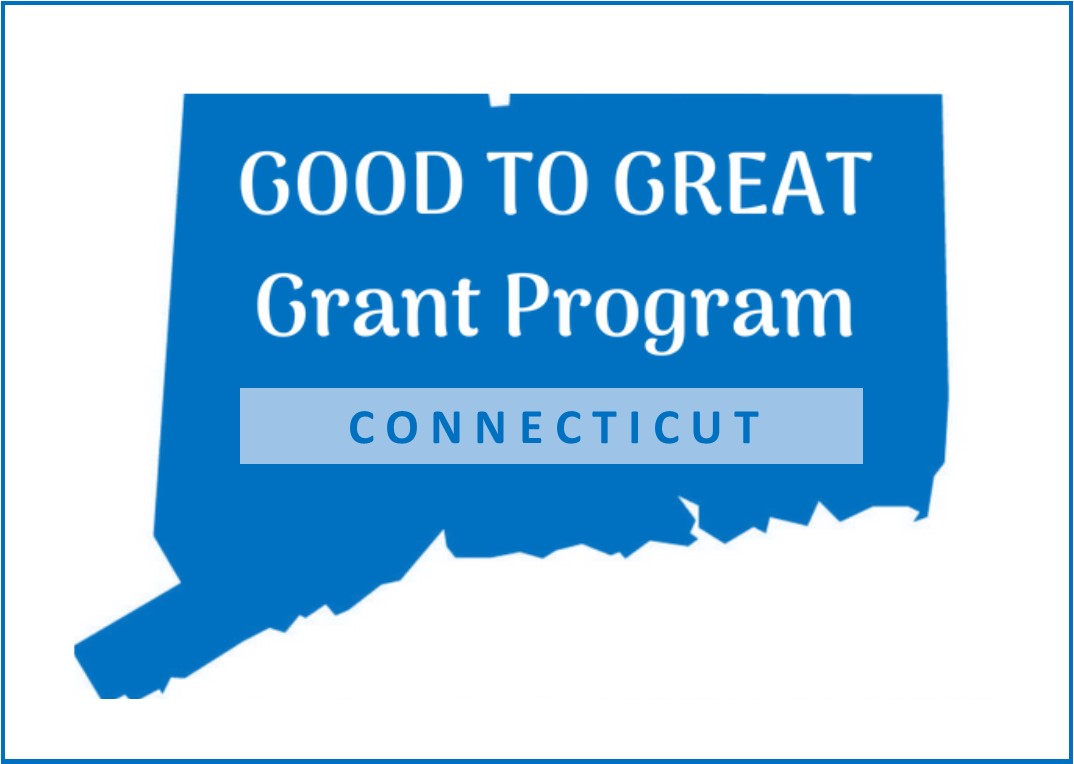Cultural and Historic Sites Receive $3 Million in Waning Weeks of Malloy Administration
/Aimed at small to medium-sized cultural organizations seeking funding for “collaborative projects which demonstrate a clear vision of how individual sites and organizations can effectively tie together local, regional or statewide cultural assets,” the Good to Great grant program was created in 2014 during the administration of former Governor Dannel Malloy to “go beyond basic facilities repair or expansion to support projects that tell the stories of our cultural and historic sites in engaging, meaningful and relevant ways.”
The final round of grants – unless the program is renewed by the Lamont administration – were announced less than three weeks prior to the change in gubernatorial leadership. The Connecticut Department of Economic and Community Development (DECD) announced $3,051,971 in grants to 12 nonprofit organizations through the program in late December.
The grants may be used for capital projects that address the rehabilitation and/or adaptive re-use of existing facilities that will transform the visitor experience, site work associated with rehabilitation projects or additions, rehabilitation of historic landscapes, or protection and/or interpretation of archaeological sites. Other appropriate uses include artists’ fees, conservator fees, construction costs, ADA accessibility, evaluation services and documentation and exhibit scripts, fabrication and installation to complement capital improvement.
The grants range between $50,000 and $150,000 and require a 25 percent cash match; grantees will have two years from date of grant contract to complete the funded project. Applicants for the state grant must be a Connecticut 501(c)(3) or 501(c)(13) organization that owns, operates and/or sponsors a cultural venue or historic site in Connecticut with an average annual income of $500,000 or less.
 The just under-the-wire recipients:
The just under-the-wire recipients:
- The New England Carousel Museum in Bristol was awarded $150,000 to install a new energy-efficient, air-handling system with humidity control to protect the Museum's collection and improve the visitors' experience.
- The Connecticut Electric Railway Association (aka The Connecticut Trolley Museum) in East Windsor was awarded $50,000 to complete the on-going restoration of one of theMuseum's most historically significant trolleys - Connecticut Company Car #3001.
- The Friends of the Pinney House, Inc. in Ellington was awarded $150,000 for the interior restoration of the Pinney House so it can be used as a cultural center, a meeting place and an education site.
- Ebony Horsewomen Inc. in Hartford was awarded $50,000 to erect a pre-fab barn building to create a meeting & classroom space and a mini Black Cowboy Museum.
- The Madison Historical Society was awarded $138,600 for the restoration and preservation of the interior of Lee's Academy and to create an ADA-compatible learning and community center.
- The Denison Society, Inc. (aka Denison Homestead) in Mystic was awarded $150,000 to restore the Homestead's barn so that it may provide areas for programs, workshops and community events.
- The Norfolk Historical Society was awarded $60,546 to redesign the welcome/reception area, reinterpret gallery space and reclaim research space.
- The Keeler Tavern Preservation Society, Inc. (aka Keeler Tavern Museum & History Center) in Ridgefield was awarded $96,575 for facility improvements (climate controlled, fire-protected, well-designed storage) for its most fragile objects that relate directly to major moments in U.S. history.
- The Stonington Historical Society (aka Old Lighthouse Museum) was awarded $56,250 for a comprehensive research effort and the commission of an archeological survey of a potential Venture Smith site; creation of a permanent Venture Smith and slavery exhibit at Old Lighthouse Museum.
- The Ward Heitmann House Museum Foundation, Inc. (aka Ward Heitmann House Museum) in West Haven was awarded $150,000 to repair the foundation and exterior along with period appropriate landscaping so the House can reopen its doors to the public.
- The Eastern Connecticut Center for History, Art and Performance (aka EC-CHAP) in Willington was awarded $1,000,000 to preserve and rehabilitate two secondary buildings for use again as an in-residence artist and a café and conduct a water mitigation plan for the main structure.
- The Mary & Eliza Freeman Center for History and Community in Bridgeport was awarded $1,000,000 for the exterior restoration of both structures, as well as the interior restoration of the Eliza Freeman House.
The grant award recipients constituted the final announcement of 2018 by the state Department of Economic and Community Development. Nineteen days later, Gov. Lamont took the oath of office. He is expected to announce the department's new leadership and management structure in the coming days.





























